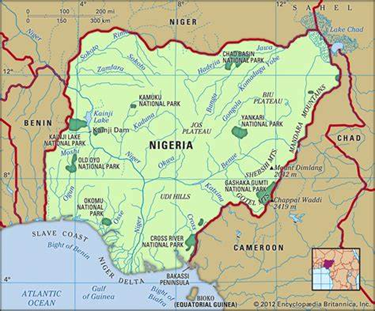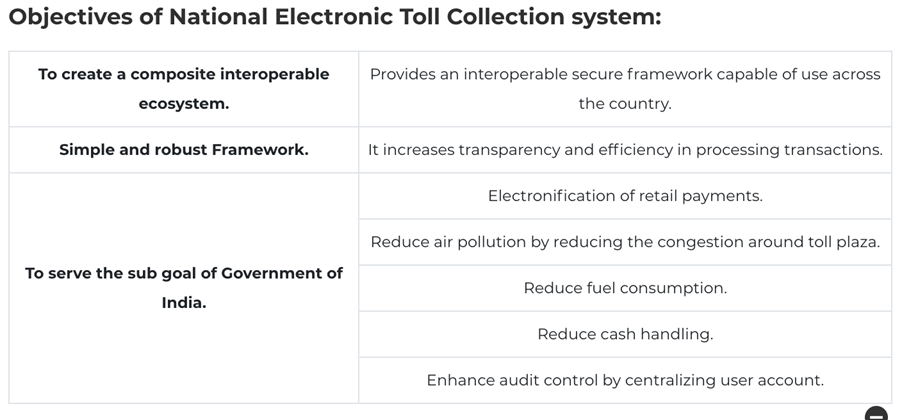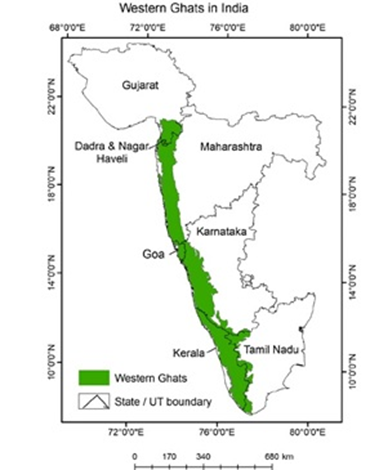IASbaba's Daily Current Affairs Analysis
Archives
(PRELIMS & MAINS Focus)
Syllabus
- Mains – GS 2 & GS 3
Context: On August 5, 2019, Prime Minister Narendra Modi announced the abrogation of Article 370, ending the special status of Jammu and Kashmir. Subsequently, Parliament exercised its powers under Article 3 of the Constitution to withdraw statehood from Jammu and Kashmir, creating two Union Territories.
Background:-
- “With the abrogation came security, dignity, and opportunity for women, youth, backward, tribal, and marginalized communities who were previously deprived of the benefits of development. At the same time, it has ensured that corruption, which plagued Jammu and Kashmir for decades, has been kept at bay,” Prime Minister remarked recently.
Key takeaways
- Five years later, after the Supreme Court affirmed the constitutionality of the process, two questions loom:
- Did the abrogation achieve its intended goals?
- What is the way forward to bridge the democratic deficit in the Union Territory?
- On the economic and governance fronts, there have been gains. Last-mile delivery of services has improved, with over 1,000 public utility services digitized.
- Major projects under the Prime Minister’s development package are either completed or nearing completion, and investments worth an estimated Rs 6,000 crore have been realized.
- Tourist visits to the Union Territory increased from 3.4 million in 2020 to 21.1 million in 2023, with the first half of 2024 witnessing a 20 percent increase over the previous year.
- On the security front, peace has largely prevailed in the Valley, though it has been maintained more through strong-arm tactics than by winning hearts and minds.
- Recently, however, the nature and focus of the conflict are shifting, with infiltrators from across the border becoming more active in the Jammu region.
- Despite the detention of several elected leaders in August 2019, the people of Jammu and Kashmir have demonstrated their faith in the democratic process.
- In the 2024 general election, voter turnout reached 58.6 percent— the highest in 35 years—during an incident-free poll. Nevertheless, politics remains the most significant work in progress.
Way forward
- Too often, the security situation has been cited as a roadblock to restoring statehood. It is crucial to recognize that viewing democracy and security as mutually exclusive is narrow and limiting.
- While restoring statehood undoubtedly requires a calibrated approach, it is a process that must commence swiftly, with clear timelines.
- The Supreme Court’s September deadline to hold elections could serve as a starting point.
- Only through active involvement of the people in the governance process can alienation be effectively addressed.
Source: Indian Express
Syllabus
- Prelims & Mains – Polity
Context: The Supreme Court’s recent verdict on sub-classification of the Scheduled Caste (SC) and Scheduled Tribe (ST) quota marked a milestone in equality jurisprudence. CJI D.Y. Chandrachud, emphasized substantive equality in the judgment.
Background:
- In a string of rulings given over the last seven years, CJI Chandrachud has referred to substantive equality to stress that reservation is a facet of merit, and not an exception to the merit rule.
- The State of Punjab v. Davinder Singh (2024) , the latest judgement allowing sub classification, stands as a testimony to the evolved understanding of judiciary with respect to reservations.
What is substantive equality
- Substantive equality is a principle in law that goes beyond formal equality, which simply means treating everyone the same. Instead, substantive equality focuses on addressing the actual disparities and disadvantages that different individuals or groups face due to their unique circumstances or historical injustices.
- It aims to ensure that everyone has an equal opportunity to succeed by recognizing and addressing the different needs and barriers that affect them.
- In essence, while formal equality treats everyone the same, substantive equality seeks to level the playing field by providing support and adjustments based on specific needs and historical contexts.
Supreme Court’s view on reservation over the years
As Limiting Equality:
- Initially, the Supreme Court took a formal and restrictive approach to reservations, viewing them as exceptions to the principle of equal opportunity.
- In The State of Madras v. Champakam Dorairajan (1951), the Court ruled that reserving seats in educational institutions was unconstitutional, as there was no explicit provision for it, unlike Article 16(4) which allows reservations in public employment.
- Parliament enacted the First Amendment to the Constitution, adding Article 15(4) to allow reservations in educational institutions, despite Article 29 prohibiting discrimination against any citizen on grounds of religion, race, caste, language, or any of them with respect to admission into educational institutions.
- This formalistic view persisted in the Indra Sawhney v. Union of India (1992) (Mandal judgment), where the Court saw Articles 15(4) and 16(4) as special provisions or in other words, an exception to the principle of equality and imposed a 50% cap on reservations.
As a Facet of Equality:
- The Court’s decision in State of Kerala v. N.M. Thomas (1975) marked a shift towards an expansive and substantive reading of equality, upholding a Kerala law that relaxed qualifying criteria for SC and ST candidates in government jobs, without viewing it as an exception to equality of opportunity.
As Limiting Efficiency:
- Article 335 of the Constitution mandates that reservations for SCs and STs in services must be consistent with administrative efficiency.
- The Supreme Court’s discourse on reservations emphasized maintaining “efficiency,” often equating merit with efficiency. This view led to rulings against reservations in promotions, as seen in the 1992 Indra Sawhney judgment, where SC held that reservations in promotions would dilute efficiency in administration.
- In 1995, the Constitution (Seventy-seventh) Amendment Act introduced Article 16(4A), allowing “consequential seniority,” which lets reserved-category candidates retain seniority gained through earlier promotions. This amendment was upheld in 2006, on the ground that the efficiency of administration was only relaxed, not obliterated.
Repudiation of the Reservation-Versus-Merit Binary:
- Chief Justice D.Y. Chandrachud has reframed the quota-versus-efficiency debate through his rulings. He argues that reservations should be seen as embodying substantive equality, rather than as concessions.
- Chandrachud contends that the stereotype linking reservation to inefficiency prevents SC/ST candidates from accessing promotions, which was precisely why reservations were introduced.
- He views constitutional amendments as a repudiation of the binary between reservation and merit.
Source: Indian Express
Syllabus
- Prelims – GEOGRAPHY
Context: Nigeria’s president called for end to protests against economic hardship.
Background:
- Amnesty International has said at least 13 people were killed in clashes with security forces on the first day of protests in Nigeria.

About Nigeria
- Nigeria, officially known as the Federal Republic of Nigeria, is a country in West Africa.
- Abuja serves as the capital, while Lagos is the largest city in Nigeria and one of the largest metropolitan areas in the world.
- The economy faces challenges, and the country is in the midst of a severe economic downturn. Nigeria experiences high levels of poverty and youth unemployment.
- It is situated between theSahel to the north and the Gulf of Guinea to the south in the Atlantic Ocean.
- Nigeria is bordered by: Niger (north), Chad (northeast), Cameroon (east), and Benin (west).
- The country has a population of over 200 million people, with more than 250 ethnic groups, and over 500 languages spoken.It isAfrica’s most populous country.
- Nigeria is a founding member of theAfrican Union and a member of many international organizations, including the United Nations, the Commonwealth of Nations, NAM, the Economic Community of West African States, Organisation of Islamic Cooperation and OPEC.
- Nigeria is Africa’s top oil producer. But it faces many challenges such as;
- Political instability and corruption
- Economic inequality and poverty
- Security concerns, including Boko Haram insurgency
- Environmental degradation and pollution
- Healthcare and education challenges
Source: Reuters
Syllabus
- Prelims – CURRENT EVENT
Context: The National Payments Corporation of India implemented new FASTag regulations effective August 1, 2024, aimed at improving toll collection efficiency.
Background:
- As part of the new rules, FASTag service providers are required to complete Know Your Customer (KYC) updates for all FASTags issued between three to five years ago by October 31, 2024. Furthermore, the NPCI mandates that any FASTag older than five years must be replaced.
About National Electronic Toll Collection (NETC) :
- National Payments Corporation of India (NPCI) has developed the National Electronic Toll Collection (NETC) program to meet the electronic tolling requirements of the India.
- It offers an interoperable nationwide toll payment solution including clearing house services for settlement and dispute management.
- Interoperability, as it applies to National Electronic Toll Collection (NETC) system, encompasses a common set of processes, business rules and technical specifications which enable a customer to use their FASTag as payment mode on any of the toll plazas irrespective of who has acquired the toll plaza.

What is FASTag?
- FASTag is a Radio Frequency Identification (RFID) passive tag used for making toll payments directly from the customers linked prepaid or savings/current account.
- It is affixed on the windscreen of the vehicle and enables the customer to drive through toll plazas, without stopping for any toll payments. The toll fare is directly deducted from the linked account of the customer.
- FASTag is also vehicle specific and once it is affixed to a vehicle, it cannot be transferred to another vehicle.
- FASTag can be purchased from any of the NETC Member Banks. If a FASTag is linked to the prepaid account, then it needs to be recharged/ topped-up as per the usage of the customer.
Source: Economic Times
Syllabus
- Prelims – ENVIRONMENT
Context: Karnataka Forest Minister Eshwar Khandre recently announced the formation of a task force aimed at addressing encroachments in the Western Ghats.

Background:
- This task force, led by the Principal Chief Conservator of Forests and Head of Forest Force, will focus on clearing illegal resorts, homestays, and other encroachments in the ghat regions. The urgency of this action is underscored by recent landslides in Shirur, where over 10 people lost their lives.
About Western Ghats
- The Western Ghats, also known as the Sahyadri, is mountain range that stretches 1,600 km along the western coast of the Indian peninsula.
- The Western Ghats traverse several Indian states: Gujarat, Maharashtra, Goa, Karnataka, Kerala, and Tamil Nadu.
- These mountains form an almost continuous chain along the western edge of the Deccan Plateau, from the Tapti River to Swamithoppe in Kanyakumari district at the southern tip of India.
- The range meets with the Eastern Ghats at Nilgiris before continuing south.
- Anamudi is the highest peak in Western Ghats.
Features:
- Biodiversity Hotspot: These mountains harbour an incredible array of plant and animal species. Over 5,000 flowering plants, 139 mammal species, 508 bird species, and countless insects call the Ghats home.
- Endemic Species: Many species found here are unique to the region. For instance, the Nilgiri tahr (a mountain goat), the Malabar giant squirrel, and the lion-tailed macaque are endemic to the Western Ghats.
- Rainfall Patterns: The Ghats intercept monsoon winds, leading to heavy rainfall on the windward side (western slopes) and a rain shadow effect on the leeward side (eastern slopes). This influences India’s overall climate.
- Water Source: Numerous rivers originate in the Western Ghats, including the Godavari, Krishna, and Cauvery. These rivers play a vital role in supporting agriculture and ecosystems downstream.
- UNESCO World Heritage Site: Recognized for its ecological significance, the Western Ghats are a designated World Heritage Site, emphasizing their importance for global conservation efforts.
Source: Hindu
Syllabus
- Prelims – GEOGRAPHY
Context: Ol Doinyo Lengai Volcano has been steadily sinking into the ground for the past 10 years, a new study shows, and the cause could be a deflating reservoir directly beneath one of the volcano’s two craters.
Background:
- The research reveals that the ground around the summit of Ol Doinyo Lengai volcano, which sits along an active rift zone in East Africa, subsided at a rate of 1.4 inches (3.6 centimeters) per year between 2013 and 2023.
About Ol Doinyo Lengai Volcano :
- Ol Doinyo Lengai, meaning “Mountain of God” in the Maasai language, is a unique and active stratovolcano located in the Gregory Rift, south of Lake Natron in Tanzania.
Geography and Structure
- Location: Situated in the Arusha Region of Tanzania.
- Elevation: The volcano rises to an elevation of approximately 2,962 meters (9,718 feet).
- Crater: It has two main craters, with the northern crater being the active one.
- Unique Lava:
- Ol Doinyo Lengai is the only known volcano on Earth that is actively erupting carbonatite magma — extremely runny magma that is saturated with alkali elements, such as calcium and sodium, and poor in silica.
- Most terrestrial magmas are rich in silica, a compound made from bonded chains of silicon and oxygen that binds molten rock together and gives it a viscous consistency.
- But unlike those other magmas, whose weight is between 45 and 70% silica, the magma that feeds Ol Doinyo Lengai contains less than 25% silica by weight.
- Appearance:
- Although the lava is black or dark gray when it erupts, it quickly turns white once it dries.
- It is because carbonatite lava weathers differently than silicate lava due to its chemical makeup.
Source: Livescience
Practice MCQs
Q1.) With reference to the Western Ghats, consider the following statements:
- The Western Ghats is a mountain range that stretches 5,600 km along the western coast of the Indian peninsula.
- The Western Ghats was recognized as a UNESCO World Heritage Site in 2012.
- Anamudi is the highest peak in Western Ghats.
Which of the statements given above is/are correct
- 1 only
- 1 and 2 only
- 2 and 3 only
- 1,2 and 3
Q2.) Ol Doinyo Lengai volcano, recently seen in news, is located in
- Tanzania
- Mozambique
- Kenya
- Indonesia
Q3.) Consider the following countries:
- Niger
- Chad
- Cameroon
- Benin
How many of the above-mentioned countries share border with Nigeria?
- Only one
- Only two
- Only three
- All four
Comment the answers to the above questions in the comment section below!!
ANSWERS FOR ’ 6th August 2024 – Daily Practice MCQs’ will be updated along with tomorrow’s Daily Current Affairs
ANSWERS FOR 5th August – Daily Practice MCQs
Q.1) – d
Q.2) – b
Q.3) – c











